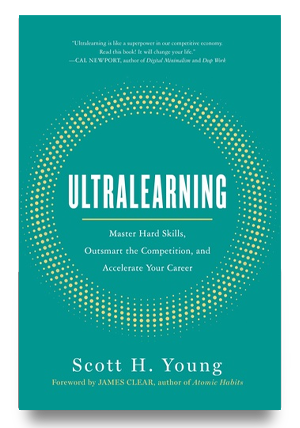This is the 695th article for this website. Subtracting the shorter entries and including articles I’ve written for other websites and my e-books, I’d estimate that represents a little under one million words of content. Every word of that was written in the last three years.
Having a high creative output is a difficult productivity skill to master. Anyone can reduce their internet usage, cut distractions or write to-do lists to double their efficiency. But doubling the amount of code you write or music you compose is much harder. Inspiration is 99% perspiration.
Despite the difficulties, I think working hard to boost your creative output is worth it. A higher creative output means better quality work and more work accomplished.
For example, in running this blog, if I have the ability to produce 8 articles per week, I can publish all of them, or select only the best two. A higher creative output allows you to work on only the best ideas, and to produce more of them.
Increasing Output by Increasing Inputs
Information dieting is a recent trend. By eliminating sources of information that don’t directly contribute to your work, you will have more time, right?
The problem is when you eliminate sources of new ideas. Creative output comes from creative input. The student who reads eight books on his topic before writing an essay will have a far easier time developing content than the student who skims a few articles.
The best way to increase your output is to increase the quality and quantity of your inputs. If you are always ingesting high quality ideas, it will be naturally easier to develop more creative solutions.
Quality is important in your input streams as well. The important factor for creative output is the number of new ideas in your creative input. I’ve followed blogs and read magazines that simply repackage the same ideas repeatedly. Unless it sparks new thinking, it won’t boost your output.
The Space Between Ideas
Boosting input can boost output because it allows you to form more connections between ideas. It’s the space between ideas where creativity comes from.
For example, if you’re an inventor, and you’re given ideas for three objects: a bicycle, a mechanically powered generator and a flashlight, you might develop a bicycle that has a built-in flashlight. The exposure of the three fundamental ideas was necessary to develop the hybrid idea.
I do the same thing writing articles. Recently, I wrote an entry applying Taoist life philosophies to productivity. If I hadn’t recently read the Tao Te Ching, I would never have made that connection.
If you are exposed to two high-quality ideas per week, that gives you one potential connection. If you are exposed to four high-quality ideas per week, there is at least six combinations. If you’re exposed to eight, that gives you 28 possible connections. An idea-rich diet offers far more space in-between ideas for you to create.
Training a Higher Output
In addition to increasing the quality of your inputs, you can boost output by training it. If you don’t exercise, running 10km each morning could be painful and dangerous. But if you’ve ran 10km every day for the last three months, doing a run tomorrow morning shouldn’t be difficult.
It usually takes me approximately 60-90 minutes to write 1000 words. If I’m writing an academic paper that is more information dense and less conversational, that might take 120-180 minutes. But I didn’t start at that pace. Writing, especially in the beginning, is difficult to force out. It used to take me several hours to write 1000 words.
Setting a Quota
For this blog, I write two articles per week. A year ago, I sustained a posting rate of 5 articles per week for over six months, but considering the longer writing style of my articles, I opted to reduce that volume. Consistency with my weekly quota made it easier to sustain a high creative output.
If you do anything creative, whether that is write, design, compose or code, set a quota for yourself. Although a few people can get away with writing whenever they feel like it, most writers can’t. If I didn’t set a weekly quota, I’d probably miss entire weeks of writing.
Once I start writing, I can usually get into a flow to continue. But the key phrase is, “once I start.” Starting can be difficult and it requires a push. If you don’t establish a quota for yourself, it can be extremely difficult to get that first push.
Learn to Churn
The fastest way to increase your creative output is simply to lower your quality threshold. If you allow yourself to produce garbage, you’ll create a lot more. Churning is an excellent strategy for boosting output, especially when you get frequently stuck.
If your quality threshold is too high, you’ll kill many great solutions before they have time to incubate. Sometimes an idea takes time to develop, before it can become an adequate solution. Churning allows those ideas to grow for a time before they are prematurely stopped.
I’ve already written a series of articles on building a creative flow. Churning is the main principle behind this, as you switch from a creative and destructive mindset in order to generate ideas and then develop the highest quality ones.
On Writing 700 Posts
Unless lightning strikes me down before I complete another 5 articles, this website will soon have 700 posts. I’d love to keep writing for another 700. Ultimately, the best way to create more is to create something you love and share it with everyone.


 I'm a Wall Street Journal bestselling author, podcast host, computer programmer and an avid reader. Since 2006, I've published weekly essays on this website to help people like you learn and think better. My work has been featured in The New York Times, BBC, TEDx, Pocket, Business Insider and more. I don't promise I have all the answers, just a place to start.
I'm a Wall Street Journal bestselling author, podcast host, computer programmer and an avid reader. Since 2006, I've published weekly essays on this website to help people like you learn and think better. My work has been featured in The New York Times, BBC, TEDx, Pocket, Business Insider and more. I don't promise I have all the answers, just a place to start.